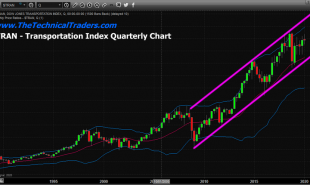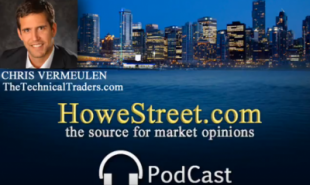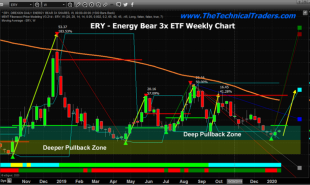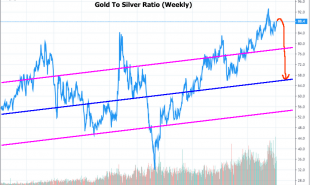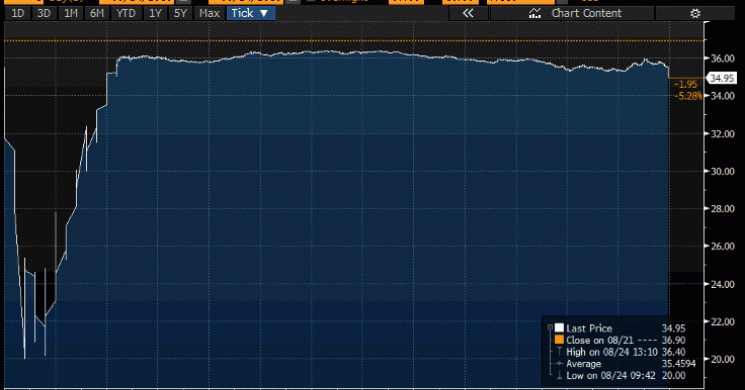
Summer doldrums? Not in the realm of Chinese short term lending rates. The leveraged lynchpin of global economic growth saw three month treasury deposits at the PBOC fetch 4.51% today, its highest rate since December 2014.
Yesterday, overnight and seven-day repurchase borrowing rates saw outsize leaps at the Chinese market open, trading at 2.98% and 3.44% before settling at 2.55% and 2.65%, respectively. The National Interbank Funding Center later deemed those early prices to be wrong, citing “calculation errors” according to four traders who spoke to Bloomberg.
Erroneous or not, the updraft in borrowing costs comes as local financial authorities undertake efforts to reduce corporate reliance on short term financing. Li Qilin of Lianxun Securities Co. told Bloomberg that: “The PBOC wants to drive the borrowing costs higher by providing longer-term funds. This helps achieve the goal of curbing leverage in the financial system.”
Credit creation funds building projects. According to the Financial Times, fixed asset investment accounted for 45% of Chinese GDP in 2016, more than double the proportion allocated in the United States and 50% higher than that of Japan. Within that category, infrastructure spending in July footed to 21.4% of fixed asset investment according to the FT, well above the 17.7% contribution from property/real estate. Xu Gao of China Everbright Securities summarizes the thought process behind the change: “Infrastructure and property have long been the main pillars supporting China’s economy. But property has cyclical ups and downs, so property investment is volatile. Infrastructure is something the government can directly control.”
Has been able to directly control, one might also say. Stockpiling debt at the state and local level may yet change the rules of the game. According to estimates from the International Monetary Fund, local government debt will exceed 50% of China’s GDP this year when accounting for off-balance sheet transactions. Speaking of the rise in infrastructure spending and its ramifications, Shen Jianguang of Mizuho writes: “It’s a very important data point. There are so many different ways that local governments finance urban infrastructure. But now there’s a real concern about how they can continue. I believe we’re headed for another deleveraging cycle like the one in 2010-11. The growth slowdown will probably be sizable over the next year.”
Meanwhile, longer term rates have snapped higher in 2017. Both the five-year and 10-year government bond yields now sit above their respective five year average levels, less than 10 months after marking post-2009 lows.
CLICK HERE to subscribe to GRANT'S
Wayback machine
August 24, 2015 saw the culmination of growing risk aversion following China’s currency devaluation earlier that month. Riding a 6.2% skid in the S&P 500 over the previous week and 8% drop in the Shanghai Composite overnight, one needn’t have been clairvoyant to surmise that a rough day for stocks was in the offing. Sure enough, the S&P 500 gapped down by 5.3% on the open before paring its losses somewhat by day’s end.
A little foreknowledge would have come in handy for the holders of various ETFs. That five-plus percent initial drop in the broad equity index translated to swan-dives of (among many such examples) 42% in the Guggenheim S&P 500 Equal Weight ETF and 46% in the Powershares S&P 500 Low Volatility (sic) Portfolio ETF before those products mounted a post-panic recovery towards their respective net asset values.
Low volatility portfolio: some assembly required

Source: The Bloomberg
That less than successful stress-test of the ETF business model has hardly deterred investors in search of asset “exposure” on the cheap. IHS Markit calculates global ETF inflows at nearly $380 billion so far this year, already exceeding the full year record set, ironically enough, in 2015. Memories are short on Wall Street.
Recap August 24
Modestly bearish action in equities left the S&P 500 at the low end of a tight range by day’s end, while Treasury yields ticked higher across the curve. Notable was the fact that the imminent arrival of Hurricane Harvey (likely a category 3) on the refiner-heavy Texas coast could not help the energy complex catch a bid; WTI crude finished red by more than 1% to settle below $48/bbl.
- Philip Grant
CLICK HERE to subscribe to GRANT'S
* * *
Grant’s Interest Rate Observer . . . Thinking required™
To unsubscribe from Almost Daily Grant's, click here
Read more by MarketSlant Editor


